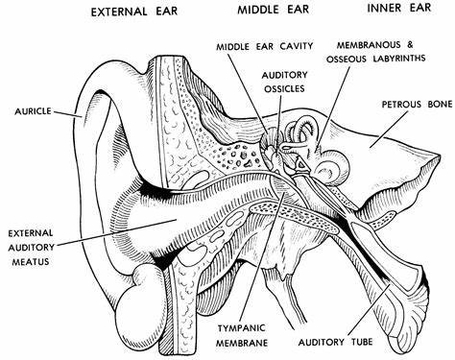The human ear is a complex organ that not only allows us to hear, but also plays a key role in maintaining our balance. It can be divided into three main parts: the outer ear, the middle ear, and the inner ear.
Outer Ear
The outer ear consists of the visible portion called the auricle, or pinna, which projects from the side of the head, and the short external auditory canal. The function of the outer ear is to collect sound waves and guide them to the tympanic membrane, commonly called the eardrum.
Middle Ear
The middle ear is a narrow air-filled cavity in the temporal bone. It is spanned by a chain of three tiny bones the malleus (hammer), incus (anvil), and stapes (stirrup), collectively called the auditory ossicles. This ossicular chain conducts sound from the tympanic membrane to the inner ear.
Inner Ear
The inner ear, also known as the labyrinth, is a complicated system of fluid-filled passages and cavities located deep within the rock-hard petrous portion of the temporal bone. The inner ear consists of two functional units: the vestibular apparatus, consisting of the vestibule and semicircular canals, which contains the sensory organs of postural equilibrium; and the snail-shell-like cochlea, which contains the sensory organ of hearing. These sensory organs are highly specialized endings of the eighth cranial nerve, also called the vestibulocochlear nerve.
In summary, the human ear is a marvel of natural engineering, capable of detecting a wide range of sounds and helping us maintain our balance. Despite its small size, it houses a complex array of structures that work together to perform these vital functions. Understanding the ear’s anatomy and how it functions can provide valuable insights into how we interpret and interact with the world around us..



